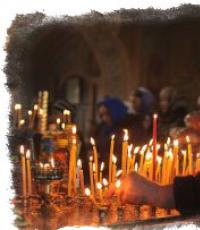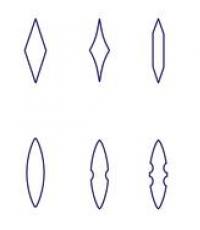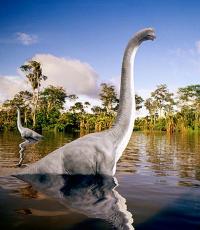Abstract: “Russian women cosmonauts. Women cosmonauts of the USSR and Russia who have been in space The third Russian woman to complete the longest flight
The first woman in space was from Russia, from the Soviet Union. Moreover, the first two female cosmonauts were from there: Valentina Tereshkova in 1963 and Svetlana Savitskaya in 1982. NASA waited until the space shuttle era before sending women into space, and Sally Ride did not become the first American woman in space until 1983.
But since Ride broke that American gender barrier 35 years ago, 50 other American women have gone into space. And only two women are from Russia - Elena Kondakova (1994 and 1997) and Elena Serov (2014). There were also two women each flying from China, Japan and Canada, and one each from France, India, Italy, South Korea and the UK.
How many women have there been in space?
This inequality is only likely to increase in the future. In NASA's last two astronaut classes, in 2013 and 2017, nine of the twenty candidates selected were women. In Russia, there was only one woman in the last two classes in 2012 and 2018, Anna Kikina. She was subsequently expelled from the cosmonaut corps in 2014 for unknown reasons. After public outcry it was restored, but it is unknown whether it will ever fly.
And the point is not that she is a woman, but that Roscosmos has a list of cosmonauts awaiting the first flight. No one from Kikina's 2012 class has flown, as the experienced cosmonauts are still waiting to fly again. The manned Soyuz launches four times a year and usually carries one cosmonaut. There are 29 cosmonauts in Russia's active corps, and Kikina is the only woman remaining after Serova's departure.
Last week, Russia announced a new intake of cosmonaut trainees, choosing eight from a pool of 420 applicants. (There was no division by gender). The competition was open to all Russians aged 35 and under with a degree in engineering, science or flight disciplines.
Why are there no women? Former cosmonaut Sergei Krikalev, now executive director of Roscosmos' space programs, says Russian women are not as keen on becoming cosmonauts as men are. “One of the main requirements for those wishing to join the team is determination, the desire to become an astronaut,” says Krikalev. “Apparently the percentage of women who want to become astronauts is a little lower.”
Original taken from bisant in Women astronauts
Many thousands of years ago, looking at the night sky, man dreamed of flying to the stars. Billions of flickering night luminaries forced his thoughts to be carried away into the vast expanses of the Universe, awakened his imagination, and made him think about the secrets of the universe.
Space has many mysteries! For centuries, people have been trying to figure out their origin! The great patriots of their country sought true scientific data! Many lost their lives in order to learn all the secrets of space. Make discoveries and learn a lot!
From generation to generation, all of humanity worked and tried to do everything in order to learn a lot more about our universe! Women also did this. Their presence in various experiments and experiments also played an important role.
Valentina Tereshkova.
After the first successful flights of Soviet cosmonauts, Sergei Korolev had the idea of launching a female cosmonaut into space. At the beginning of 1962, a search began for applicants according to the following criteria: parachutist, under 30 years of age, up to 170 centimeters tall and weighing up to 70 kilograms. Out of hundreds of candidates, five were chosen: Zhanna Yorkina, Tatyana Kuznetsova, Valentina Ponomareva, Irina Solovyova and Valentina Tereshkova.
During their training, they underwent training to test their body’s resistance to the factors of space flight. The training included a thermal chamber, where she had to be in a flight suit at a temperature of +70 ° C and a humidity of 30%, and a soundproof chamber - a room isolated from sounds, where each candidate had to spend 10 days.
Zero-gravity training took place on the MiG-15. Weightlessness was established inside the plane for 40 seconds, and there were 3-4 such sessions per flight. During each session, it was necessary to complete the next task: write your first and last name, try to eat, talk on the radio.
Particular attention was paid to parachute training, since the astronaut ejected before landing and landed separately by parachute. Since there was always a risk of splashdown of the descent vehicle, training was also carried out on parachute jumps in the sea, in a technological, that is, not adjusted to size, spacesuit.
When choosing Tereshkova for the role of the first female cosmonaut, in addition to successfully completing training, political factors were also taken into account: Tereshkova was from the workers. She made her space flight on June 16, 1963 on the Vostok-6 spacecraft, it lasted almost three days. Tereshkova’s call sign for the duration of the flight is “Seagull”; the phrase she said before the start:
"Hey! Heaven, take off your hat!
Despite nausea and physical discomfort, she survived 48 orbits around the Earth and spent almost three days in space, where she kept a logbook and took photographs of the horizon, which were later used to detect aerosol layers in the atmosphere. The Vostok 6 lander landed safely in the Baevsky district of the Altai Territory.
Svetlana Savitskaya
Svetlana Savitskaya - cosmonaut, test pilot, aviation major, Honored Master of Sports of the USSR. Candidate of Technical Sciences. Twice Hero of the Soviet Union, awarded orders and medals of the USSR and foreign countries.
Svetlana Savitskaya made her first flight on the Soyuz T-7 spacecraft with a duration of 7 days 21h 52m 24s. Performed the functions of a cosmonaut-researcher. Following the flight, Savitskaya was awarded the title of Hero of the Soviet Union and awarded the Order of Lenin for the courage and heroism shown in the flight. In 1984, Svetlana Savitskaya flew into outer space for the second time, she served as a flight engineer for the Soyuz T-12 crew. It was on this flight that she, the first woman, performed a spacewalk, lasting 3 hours and 35 minutes.
Elena Kondakova
Elena Kondakova is a Russian cosmonaut and political figure. Hero of the Russian Federation, awarded orders and medals of Russia and the United States of America. The first female cosmonaut to make a long flight into outer space and the third female cosmonaut in Russia.
Elena Kondakova, graduated from Moscow State Technical University. Bauman, after which she went to work at RSC Energia, where she was engaged in the design and development of spacecraft. Elena Kondakova was enrolled in the Soviet cosmonaut corps in 1989. Kondakova made two flights into space. The first flight took place in October 1994 on the Soyuz TM-20 spacecraft. Elena Kondakova returned to Earth in March 1995, so the flight lasted 169 days. This was a record, since before Elena, no female astronaut had been in space for so long. The expedition, as part of which Elena Kondakova made her flight, completely fulfilled the task set by the flight program. Following the flight, Elena Kondakova was awarded the Title of Hero of the Russian Federation for her courage and heroism during the flight, with the goal of peaceful exploration of outer space.
In May 1997, Elena Kondakova made her second flight into outer space, on the Atlantis shuttle STS-84, as a specialist. Following the flight, Kondakova was awarded a NASA medal.
Nowadays you won’t surprise anyone with flights into space. Of course, they are not yet perceived as an everyday phenomenon, but still there is no such excitement that accompanied the first steps of mankind into the foundation of the unknown endless starry sky. More than half a century has passed since the first flight into space in history. During this time, more than five hundred people managed to see through the glass of the porthole how endless the expanses of the Universe are. Not only men flew on board. Among them were and are women cosmonauts of the USSR and Russia.
First in the world
The championship in this area belongs to one of the most famous personalities in the world - Valentina Tereshkova. She was born in 1937 in a small village located near Yaroslavl. When she turned 22, she became seriously interested in skydiving.
In 1962-1997, she was part of the female cosmonaut corps. Besides her, there were 4 more candidates for the flight. It must be said that Tereshkova was not the best in terms of endurance and physical fitness. But the government of that time decided to send her into space first.
There were two reasons that influenced this decision. The first of these is origin. Valentina Tereshkova was, as they said at that time, a product of “the people.” The second reason is attractive appearance, charm and charisma.
Despite the fact that the flight was officially declared successful, it was not without difficulties. Tereshkova felt bad, and the spacesuit was very uncomfortable. Because of this, she was unable to complete all planned tasks in full. In addition, a number of other technical difficulties emerged. For example, when assembling the manual control, errors were made that almost led to the deviation of the ship from orbit. But since the automation was at its best, the landing went well.
In 1963, Tereshkova received the rank. In addition, she is so far the only woman in the Russian Army to hold the military rank of major general.
It must be said that all the women from Russia who have been in space have made an invaluable contribution to the exploration and study of our Universe. But only Valentina Tereshkova, to this day, is the first and only representative of the fair sex to fly solo into Earth orbit.
First in outer space
The next woman to see space was She was born in 1947 into the family of a marshal and became an astronaut thanks to her strong determination, willpower and high professionalism.

Savitskaya’s career began with the NPO Vzlet, where she worked as a test pilot. In 1982, she joined the crew of the Soyuz T-7 spacecraft, where she spent 8 days. And after 2 years she went into outer space, where she stayed for 3 hours and 35 minutes.
Longest flight
The next representative to join the list of “and Russia” was She was born in 1957 in the Moscow region, in the town of Mytishchi. In 1989 she became a candidate for the cosmonaut corps and, after special training, received the qualification of a researcher.
Like her two predecessors, Elena Kondakova also became the first in terms of duration of stay in space. Its total duration was almost 179 days. She has two flights to her credit: one in 1994 on the Mir station, the second in 1997 on the Atlantis spacecraft (shuttle).

Women cosmonauts of the USSR and Russia are not only space explorers, but also take an active part in the political life of the country. In 1999, Elena Kondakova was elected to the State Duma.
New "star woman"
After 17 years, on September 26, 2014, another spacecraft was launched from Baikonur, the crew of which includes this is her first flight. According to the plan, it should last 170 days and nights.
The fourth female cosmonaut was born in the seaside village of Vozdvizhenka. After graduating from the Moscow Aviation Institute, she was hired at She constantly improved her skills and in 2009 became a test cosmonaut.

Women cosmonauts of the USSR and Russia are always at their best. Their profession requires great courage, strong willpower, as well as the ability not to get confused and cope with any emergency situation.
And even though the list of female cosmonauts from our compatriots is still small, they have everything ahead of them. After all, there are still many mysterious and unknown things that the truly endless Universe conceals.
The progressive twentieth century gave women the freedom to choose their own future. Many ladies found themselves in traditional male professions, becoming builders or factory workers. human space flight gave women new opportunities. Not only traditionally men, but also the weaker half of humanity became astronauts. Women cosmonauts of the USSR and Russia were among the first to master a new profession.
Valentina Tereshkova - the first female cosmonaut
Valentina was born in a small village in the Yaroslavl region. The mother, who worked in a textile factory, raised her daughter alone, having lost her husband during the Finnish War.

Tereshkova never planned to connect her life with heaven. After graduating from the seventh grade, the girl began her working career at the enterprise, while simultaneously studying at evening school, and then at the technical school of light industry. In her free time, Valentina visited the local flying club, where she practiced parachuting.
Gagarin's successful flight proved that man is capable of surviving in space. It remains to prove that not only men, but also women are suitable for this. Soon the selection of candidates began, among whom was Valentina, who was distinguished by her success in the parachute section. In 1962, Tereshkova underwent special training and, after passing the exams, received a place in the first cosmonaut corps.

The choice fell on Valentina not only because the girl had good sports training, was physically strong and resilient. Political nuances also played an important role. The father of the future cosmonaut died in the war. The girl was from a simple working family. In addition, the candidate was required to have the ability to behave well in public. It was assumed that after a successful flight she would be actively engaged in political propaganda, traveling around the world and showing the merits of the socialist system. According to the specialists who worked with the cosmonauts, Tereshkova certainly had to cope with all this.
Valentina Tereshkova kept her future flight a secret. On June 16, 1963, the girl, as usual, went to train at the flying club. Tereshkova’s relatives and friends only learned on the radio that it was on this day that she became the first woman in space.

Interesting facts about Valentine:
- Tereshkova did not survive her flight well not only because the technology in the 60s of the last century was imperfect. The results of Valentina's medical examination were among the worst. Social status became the decisive factor.
- Having landed in the Altai Territory, Valentina violated her prescribed diet. She gave the remains of the astronaut's special food to local residents and ate regular food.
- Valentina Tereshkova was able to become an active public and political figure. She served as head of the Soviet Women's Committee and was a member of the CPSU Central Committee and the Presidium of the Supreme Council. In 2011, Valentina was elected to the State Duma.
Female cosmonaut Elena Serova
Unlike her older colleague, Elena Serova was born into a military family. The father's job responsibilities forced the family to frequently change their place of residence. Elena graduated from high school in Germany. Then the girl received 2 higher educations, graduating from MAI and MGAPI.
Elena went into space much later than Valentina Tereshkova. The future Russian cosmonaut underwent more serious tests, and it took much more time to prepare for the flight. Having started preparing for it back in 2006, Elena Serova reached her cherished goal only in September 2014. At the beginning of 2016, the fourth Russian woman in space was twice awarded for courage and heroism.
The last century has shown skeptics that there is no concept of male or female professions. Bravery and bravery are inherent in representatives of both sexes. Women cosmonauts of the USSR and Russia were able to show the rest of the world that not only men are endowed with strength and endurance. Thanks to Russian women, the myth that the only purpose of the fair sex is childbearing and housekeeping has been proven untenable.
Municipal educational institution
Bogatovskaya secondary school "Education Center" of the Bogatovsky municipal district, Samara region
ABSTRACT
in the discipline "Cosmonautics" on the topic
"Russian women - cosmonauts"
student of class 7 "A"
municipal educational institution Bogatovskaya secondary school "Education Center" of the Bogatovsky municipal district, Samara region
Scientific supervisor: Ulanova M.V., mathematics teacher
Rich 2011
I. Introduction................................................... ...........................................3
II. Main part
Formation of a women's squad…………………...…..4
Valentina Vladimirovna Tereshkova…………………….6
Svetlana Evgenievna Savitskaya………………………..……..9
Kondakova Elena Vladimirovna ………………….. ……12
III. Conclusion………………………………………………………….……15
IV. References……………………………………………………...17
I.Introduction
“On April 12, 1961, in the Soviet Union, the world’s first spacecraft-satellite “Vostok” with a person on board was launched into orbit around the Earth. The pilot-cosmonaut of the Vostok spacecraft is a citizen of the Union of Soviet Socialist Republics, pilot Major Yuri Alekseevich Gagarin.” These words from the TASS report will forever remain in the history of mankind as one of its most significant, brightest and memorable pages. Years, decades will pass, flights into space and even to other planets will become a common, everyday thing, but still, what this man from the Russian town of Gzhatsk accomplished will forever remain in the minds of many generations as one of the greatest feats ever accomplished People.
In those years, there was a competition between the USSR and the USA for the leading role in the conquest of space. Of course, the leading place in this competition was occupied by the Soviet Union. The United States lacked powerful launch vehicles, the operation of which Soviet astronautics had already tested in January 1960, conducting tests in the Pacific Ocean. Almost all the major newspapers in the world wrote that the USSR would soon launch a man into space and, of course, leave the United States behind. The whole world was looking forward to the first flight.
And now this day has come. On April 12, 1961, man first looked at the planet from space. The Vostok spacecraft was flying towards the sun, and at that time the entire planet was pressed to the receivers. The world, shocked and excited, watched the progress of the greatest experiment in history.
"Man in space!" - this news interrupted radio broadcasts and regular messages from telegraph agencies mid-sentence. “The Soviets let the man go! In space - Yuri Gagarin! The one hundred and eight minutes it took for Vostok to encircle our planet testify not only to the speed at which the spacecraft was flying. These were the first minutes of the space age, and that is why they shocked the world so much.
This year our entire huge country celebrates the 50th anniversary of the first flight into space. We know many of the names of male cosmonauts, but I would like to tell everyone about the first women cosmonauts in our country.
II.Main part
Formation of a women's squad
After the first successful flights of Soviet cosmonauts, Sergei Korolev had the idea to launch a female cosmonaut into space. At the beginning of 1962, a search began for applicants according to the following criteria: parachutist, under 30 years of age, up to 170 centimeters tall and weighing up to 70 kilograms. The official date of formation of the women's group under the First Cosmonaut Detachment is considered to be March 12, 1962. From more than a thousand applicants, five people were selected - engineer Irina Solovyova, mathematician and programmer Valentina Ponomareva, weaver Valentina Tereshkova, teacher Zhanna Erkina and secretary-stenographer Tatyana Kuznetsova. Yuri Gagarin, who was present at the meeting of the credentials committee, objected to Ponomareva’s candidacy. “Cosmonautics,” he said, “is a new, difficult, unknown and unsafe business. Is it worth risking the life of a mother?” But she was still enrolled in the detachment. The recommendation of Academician Mstislav Keldysh, the director of the institute where Ponomareva worked, played a role.
There was no Star City then. The location of the Training Center was kept secret. Its territory was surrounded by a high fence, along which guard dogs served. Behind this fence, the “special battalion of women,” as cosmonaut Alexei Leonov called the women’s group, were to experience the “factors of space flight.” Immediately after being accepted into the cosmonaut corps, Valentina Tereshkova, along with the other girls, was called up for compulsory military service with the rank of private.
In September 1964, the entire female squadron entered the Air Force Academy. That same fall they all got married. The wedding parade was opened by Valentina Tereshkova.
At this time, the Korolev Design Bureau was developing a new Soyuz spacecraft, at the same time a series of five Voskhods was underway, and work was planned on several Vostoks. In 1966, it was planned to carry out nine flights, in 1967 - fourteen, in 1968 - twenty-one. However, Korolev stated that he did not need a women’s detachment, women did not justify themselves, and one female flight was enough for him.
However, in the summer of 1966, the deputy arrived at the Cosmonaut Training Center. Air Force Commander-in-Chief Nikolai Kamanin and announced that a flight of a female crew on the Voskhod spacecraft was planned for 15 days with a spacewalk. The commander was planned to be Ponomareva, and Solovyova to be the commander. The backup crew of Erkin - Kuznetsov. Preparations began, which were carried out sluggishly and were limited to simulators. And soon Korolev dies and the Voskhod series of ships was closed. In October 1969, “due to impossibility of use,” the first female cosmonaut recruitment was disbanded.
Valentina Vladimirovna Tereshkova
The first Soviet woman cosmonaut Valentina Vladimirovna Tereshkova was born on March 6, 1937 in the village of Maslennikovo, Tutaevsky district, Yaroslavl region, into a family of collective farmers.
My father worked as a tractor driver, my mother did housework and worked on a collective farm. During the Great Patriotic War, her father died at the front, and her mother had to raise three children alone. The family moved to Yaroslavl, where Valya went to school and completed seven years of school, then an evening school for working youth.
At the end of June 1954, V. Tereshkova came to work at the Yaroslavl Tire Plant in the assembly shop as a cutter, and in 1955 she moved to the Yaroslavl Industrial Fabrics Plant "Krasny Perekop", where she worked as a bracelet maker. In 1956, Valentina entered the Yaroslavl Correspondence College of Light Industry.
In addition to working and studying at a technical school, the girl attended a local flying club, went in for parachuting, and made 163 parachute jumps. She was awarded the first category in parachuting.
Ambition and fearlessness helped her withstand the competition for the cosmonaut corps, where she entered in 1962. It was prepared according to a special program since space flights at that time were carried out only in automatic mode.
During her training, she underwent training on the body’s resistance to the factors of space flight. The training included a thermal chamber, where she had to be in a flight suit at a temperature of +70 ° C and a humidity of 30%, and a soundproof chamber - a room isolated from sounds, where each candidate had to spend 10 days.
Zero-gravity training took place on the MiG-15. When performing a special aerobatics maneuver - a parabolic slide - weightlessness was established inside the plane for 40 seconds, and there were 3-4 such sessions per flight. During each session, it was necessary to complete the next task: write your first and last name, try to eat, talk on the radio.
Particular attention was paid to parachute training, since the astronaut ejected before landing and landed separately by parachute. Since there was always a risk of splashdown of the descent vehicle, training was also carried out on parachute jumps in the sea, in a technological, that is, not adjusted to size, spacesuit.
Tereshkova completed a full course of training; she used all flight hours, learned to control herself in zero gravity, and learned about the technical side of flight.
Initially, it was planned for two female crews to fly simultaneously, but in March 1963 this plan was abandoned, and the task became to choose one of five candidates.
When choosing Tereshkova for the role of the first female cosmonaut, in addition to successful completion of training, political issues were also taken into account: Tereshkova was from the workers, while, for example, Ponomareva and Solovyova were from the employees. In addition, Tereshkova's father, Vladimir, died during the Soviet-Finnish War when she was two years old. After the flight, when Tereshkova was asked how the Soviet Union could thank her for her service, she asked to find the place where her father was killed.
Already in June 1963, just a year after the start of training, Tereshkova made a three-day flight on the Vostok 6 ship, circumnavigating the Earth 48 times and flying one and a half million km.
Tereshkova’s call sign for the duration of the flight is “Seagull”; the phrase she said before the start: “Hey! Heaven, take off your hat! (modified quote from V. Mayakovsky’s poem “A Cloud in Pants”).
After the flight, N.S. Khrushchev said that Tereshkova spent more time in space than all American astronauts combined. Her flight was supposed to demonstrate the capabilities of the Mission Control Center (MCC), which successfully managed to control three ships at once. No less important was the fact that Tereshkova became the first person to fly into space without special flight training. After all, all the other cosmonauts were military pilots.




